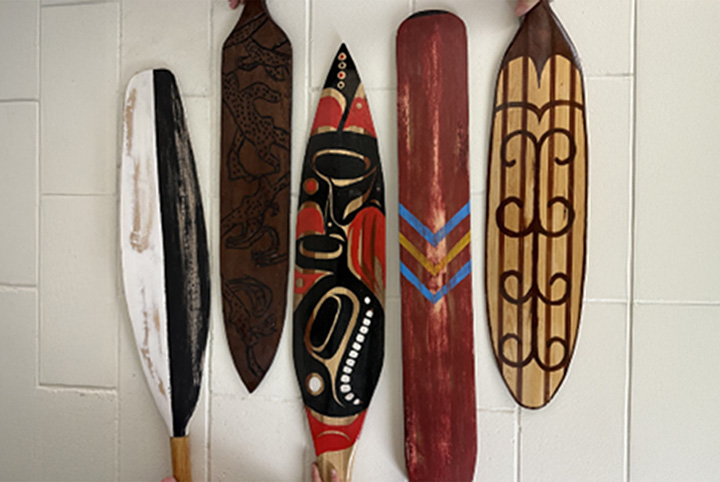
Simple machines meet 3-D nets.
To end the year, Grades 4 and 5 learners were learning about simple machines in science and 3-D objects in math. A final project asked them to create and co-construct a castle that incorporated simple machines and used nets of 3-D shapes in the design of their building.
First, the learners engaged in research to help with their design process and enhance their knowledge about castles. They used multiliteracies and different types of texts, including non-fiction books, websites, pictures, diagrams, and their knowledge of online world-building games, to better understand the design of castles. As the project was open-ended, the learners were prompted to ask relevant questions to clarify their understanding (e.g., Do all simple machines need to be represented? Can we decorate it any way we want? Do we have to use a template?). Using these questions, the teacher and learners discussed the options and co-constructed criteria to support them in making practical and meaningful decisions throughout the project. For example, the learners needed to include three simple machines and three different nets of 3-D shapes, and they were required to share the workload.
The learners already had a lot of practice with group work and collaborating during the year. This final project required them to build on each other’s ideas, co-construct a meaningful design, and work through their differences to contribute equitably to the project. They were encouraged to compromise and share in completing the tasks required to build their castles. The teacher offered regular times for reflection and check-ins for groups to consider how the collaboration in the group was working and to plan for next steps. The learners incorporated mathematic, scientific, and artistic thinking into their process. As a group, they actively participated and were co-designers of their learning as they made choices through each phase of the design process. The learners were engaged, flexible, and reflective as they worked together. After completing their initial sketches and design plans, groups partnered up with another group to present their ideas and received feedback, which they then considered when moving forward.
As learners began the building process, they were provided with a variety of materials, such as nets, elastic bands, pieces of wood, cardboard, spools, straws, dowels, large craft sticks, art supplies, and any other materials they had requested. As they built, the teams adjusted their plans as needed as they encountered obstacles and challenges.
In the end, the castle designs were set up in a gallery format, and younger classes were invited in to view them. The castle creators then shared highlights of their castles, including pointing out the simple machines and 3-D shapes/nets included within. In the end, the learners were asked to do a final reflection, considering the creative process they had gone through, including the collaboration of their group members.
You can find free templates specifically for building paper castles, such as those found at It's Always Autumn - How to Make a Paper or Cardboard Castle.
They can be used in conjunction with other types of 3-D nets or by themselves. Learners can stick to the template, or they can use multiple parts of the templates.
Autumn. “How to Make a Paper or Cardboard Castle.” It’s Always Autumn, 13 Mar. 2021.